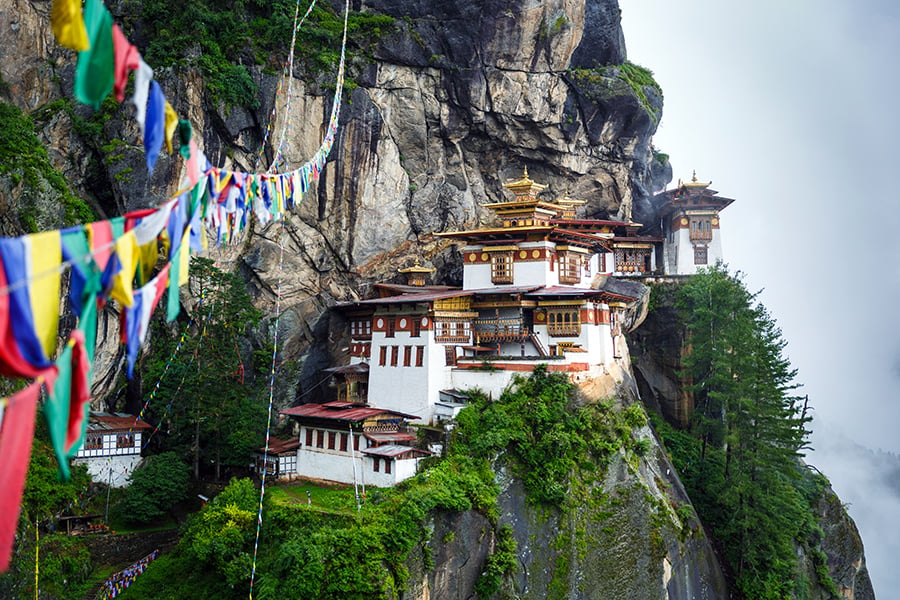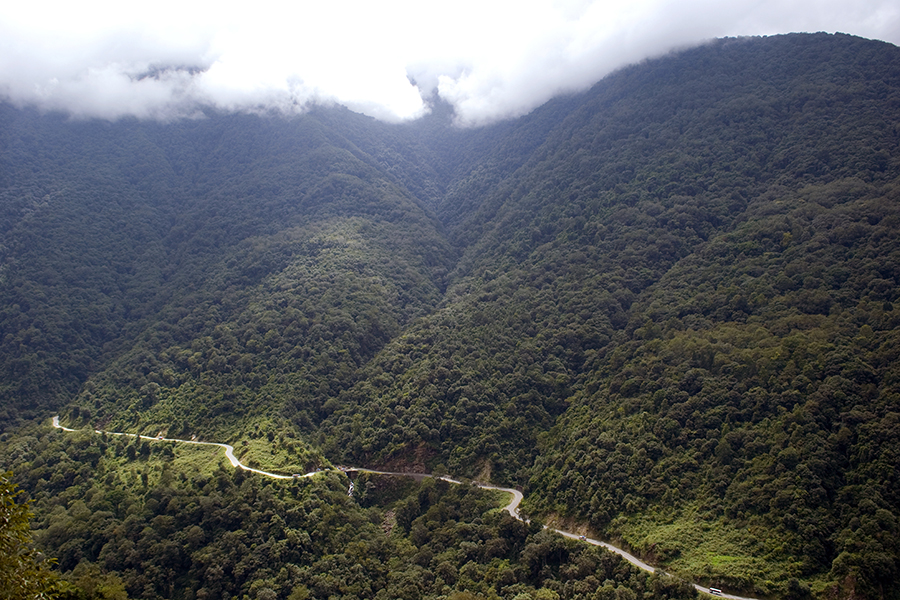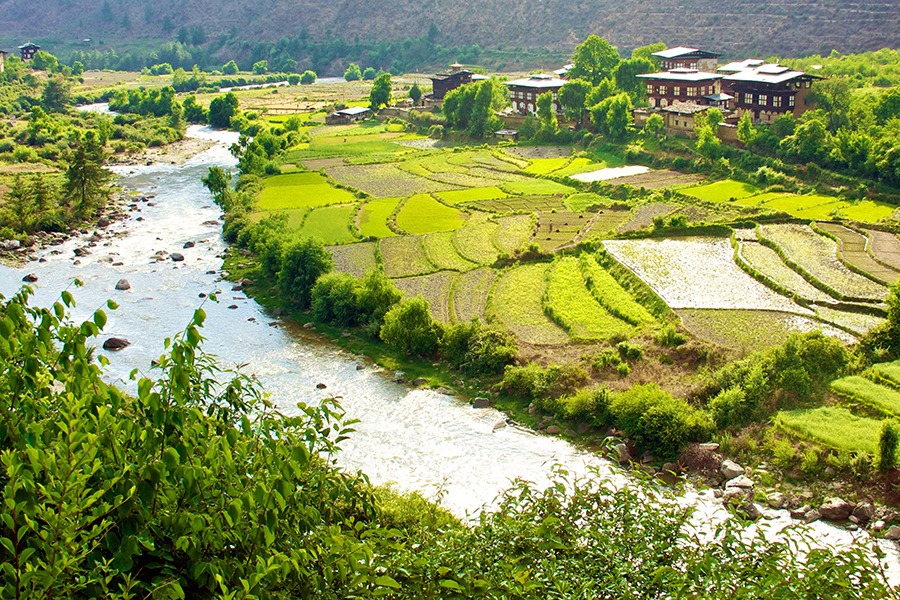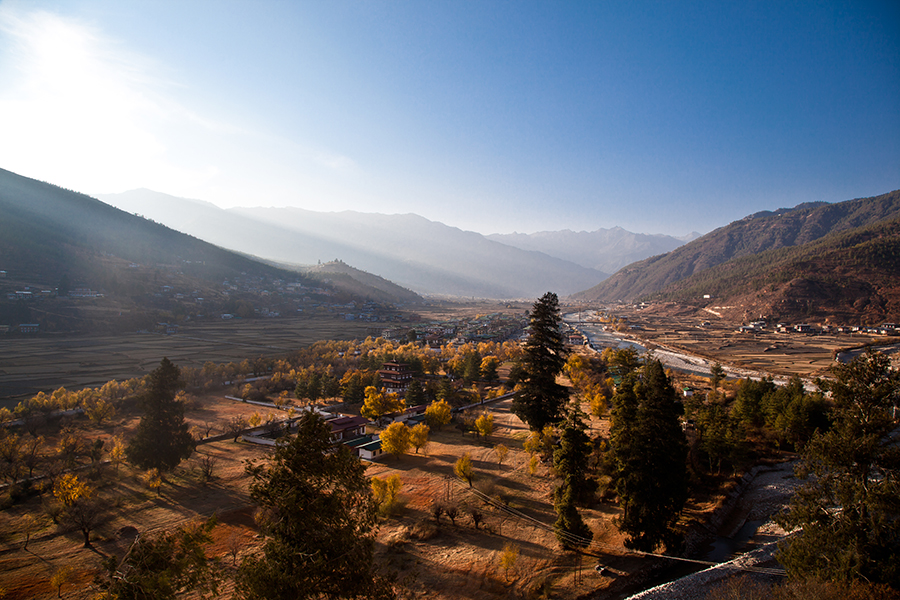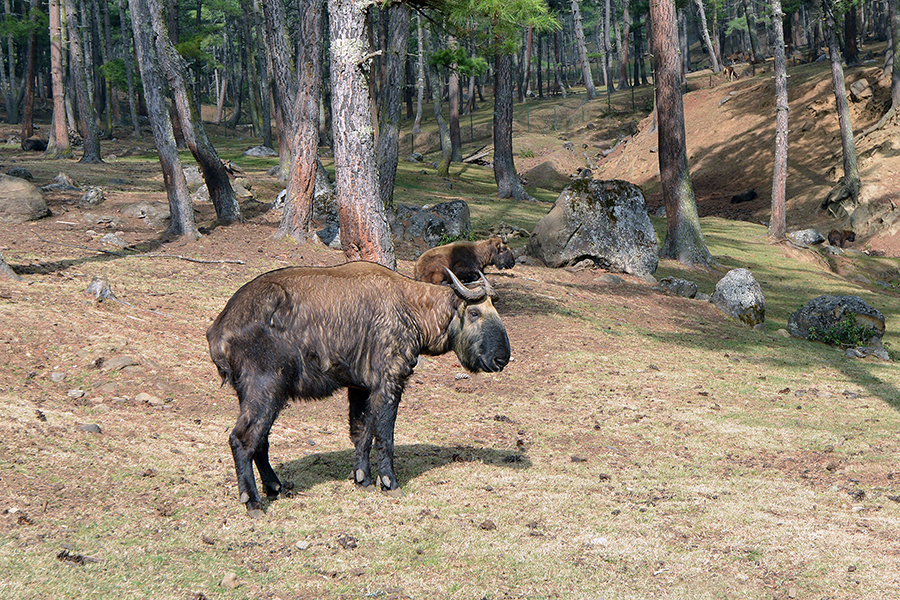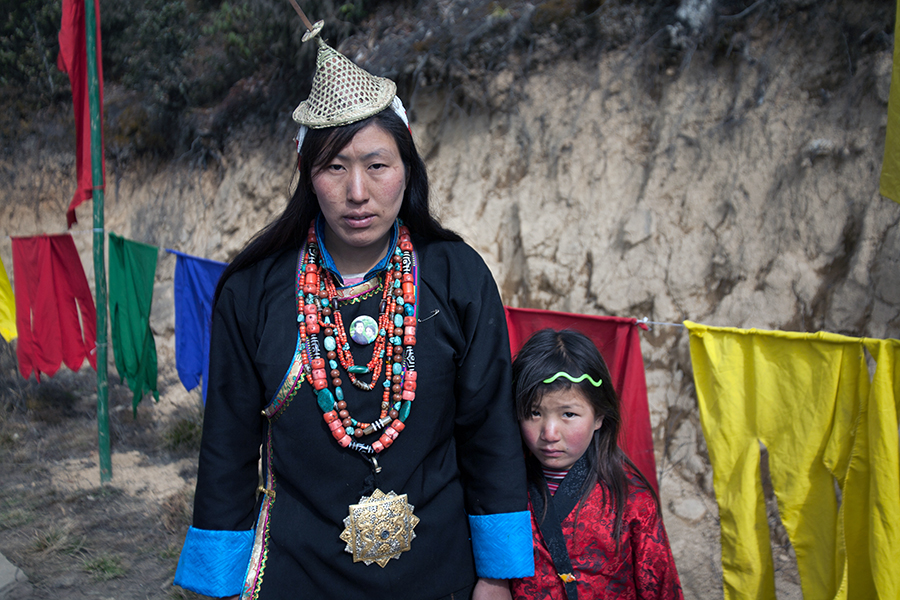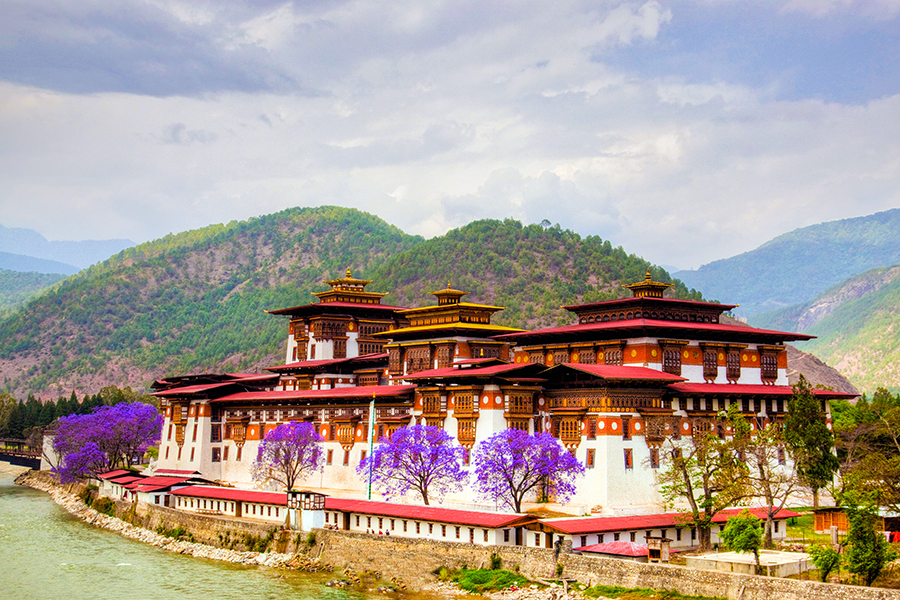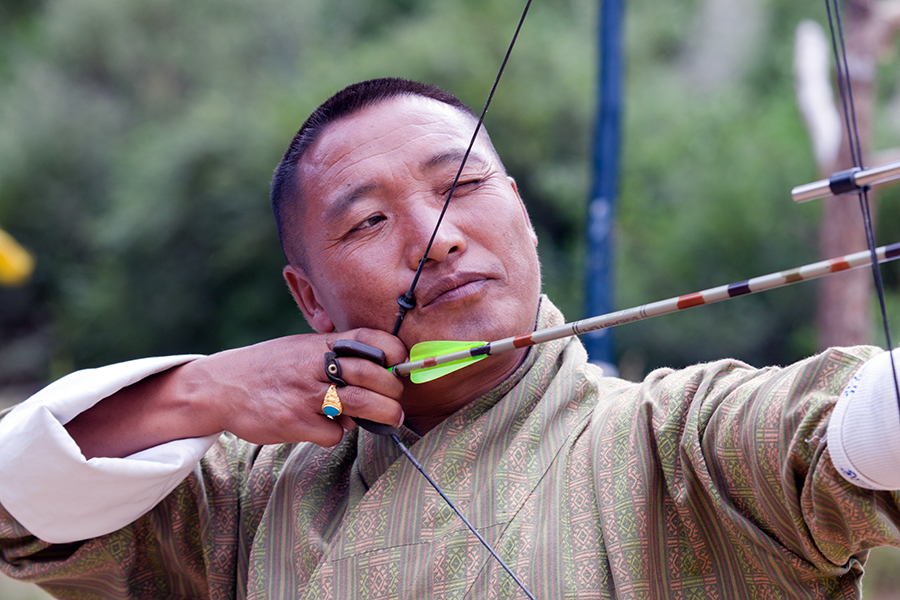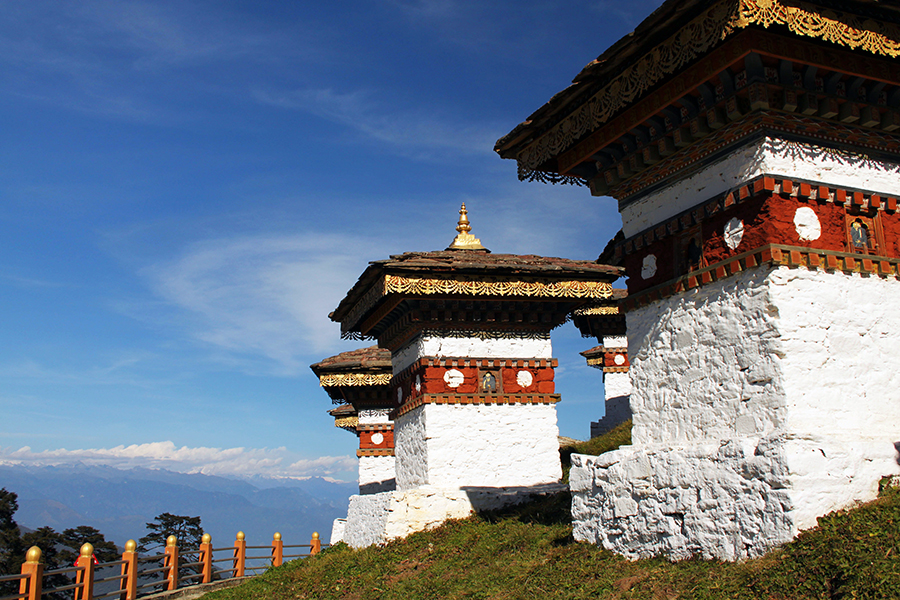Trek Bhutan: beautiful Laya
Duration(in days): 20
From: Paro
To: Paro
From
£4,745
See more ideas for: Bhutan
Overview
Experience trekking in the beautiful nation of Bhutan, high up in the Himalayas. This trek takes you along high mountain passes, through the wilderness and into a world of snowy peaks, glacial lakes, blue sheep and alpine blossoms. Meet the local Layap people and hike through one of the most magnificent landscapes on earth.
Highlights
- Visit the spectacular Tiger's Nest monastery
- Go horse riding through lush forests
- Discover the ruins of an old fortress as you trek to Jhomolhari base camp
- Enjoy spectacular views of the Himalayas as you trek the Jarela Pass
- Learn about the traditional way of life in the mountains
- Explore the capital city of Thimpu
Itinerary
Day 1: Arrive in Bhutan
Arriving into Paro, you’ll be met and transferred to your hotel. The flight into Bhutan will afford you magnificent views of Mount Everest, Kanchenjunga and the rest of the Himalayas. This afternoon you’ll visit Ta Dzong, the National Museum and one of the city’s innumerable archery grounds. Archery is the national sport of Bhutan and if you’re lucky you might catch a match in action.
Day 2: Tiger’s Nest Monastery
Today you’ll visit the spectacular Taktsang (Tiger’s Nest) Monastery in order to acclimatise before the main trek. A two hour horse ride will take you through lush pine forests, festooned with Spanish moss and fluttering prayer flags before you catch sight of the Taktsang Monastery, clinging to the edge of the sheer cliff. Built in the 1600s, legend has it that Guru Padmasambhava, the man who brought Buddhism to Bhutan, landed here on the back of a flying tiger!
Day 3: Paro to Shana (start of trek)
This morning you’ll travel to Shana where the trek begins. Past the ruins of Drukgyal Dzong, you’ll follow the Paro River and passing by pretty villages and cultivated fields. Keep a look out for brightly coloured butterflies and birds amongst the trees before camping overnight at Shana. (Distance: 14km, Time: 5-6 hours)
Day 4: Shana to Soi Thangthangkha
Continuing on your trek today, you’ll hike through a heavily forested area, full of tall oaks and bushes of rhododendrons and pass by the junction where the path leads over the Tremo La to Tibet. It’s a long day today with 7-8 hours of trekking before camping in a lush meadow where a stone shelter lies. (Distance: 21km, Time: 7-8 hours)
Day 5: Soi Thangthangkha to Jangothang
After breakfast today you’ll carry on along the train, leaving the forest line and gradually climbing into a beautiful valley, a winter home of yak herdsmen. You’ll spot lots of yaks today as you hike up towards Jhomolhari base camp where the ruins of an old fortress that defended Bhutan against Tibetan invasions are visible on clear days. (Distance: 15km, Time: 5-6 hours)
Day 6: Jangothang to Halt
Today is yours to rest after a hard few days trekking. You can acclimatise to the altitude by relaxing in the camp and enjoying the views or head up to the Jhomolhari glacier to hike across the ice, catching glimpses of the deep blue lakes around it.
Day 7: Jangothang to Lingshi
An early start will take you past the spectacular views of the Jhomolhari, Lichu Drake and the Tseim Gang. After a few hours you’ll reach the Nyelela pass before descending a little way to a hut just below Lingshi, where you’ll camp. The short walk down from Lingshi is where you’ll get your first magical views of the dzong atop the hill. (Distance: 17km, Time: 6-7)
Day 8: Lingshi to Chebisa
Today will go at leisurely pace, while you climb gently to reach the delightful village of Gom Yu, set right below a 300 metre high cliff. A little further on and you’ll arrive in a lovely valley where a huge waterfall feeds into a gushing river, next to which you’ll camp tonight. There are lots of places and views where you can linger and drink in the Bhutanese landscape. (Distance: 12 km, Time 4-5 hours)
Day 9: Chebisa to Shomuthang
A tough climb this morning will take you through the high pastures of the Gokula pass, before dropping through forests of dwarf rhododendrons and birch trees. Again you’ll camp by the river after a tiring day, looking forward to a good night’s sleep. (Distance: 17kms, Time: 6-7 hours)
Day 10: Shomuthang to Robluthang
A long haul over the Jarela pass today will garner you stunning views of the Himalayan Mountains, high above the surrounding hills. Dropping steeply through a forest where herds of Takin, the Bhutanese national animal, roam, before crossing a knee deep river and climbing up to Robluthang where you’ll make camp for the night. (Distance: 22kms, 7-8 hours)
Day 11: Robluthang to Limithang
Today is one of the hardest days of the trek with a climb up to the Shinchela pass at 4,870 feet. On a clear day up here, almost all of the mountains on the northern border are visible, with eagles, vultures, lue sheep and yaks wandering amongst the hills surrounding you. Although a difficult day in terms of walking, the views make it all worthwhile. You’ll descend back down the mountains to camp in a lovely spot by the riverbank. (Distance: 17km, Time: 6-7 hours)
Day 12: Limithang to Laya
Walking along the river today through the forest of silver firs, you’ll arrive at the village of Laya. The people of the village are famous for their vertical stripe yak-hair clothing and the conical bamboo hats they wear. You'll notice the features of the people here are even more Tibetan and Mongolian than the Bhutanese who live in the central valley’s you’ve passed through. You can spend the day exploring the village and learning the way of life in the mountains. (Distance: 10kms, Time: 4-5 hours)
Day 13: Laya
Today is a rest day, where you’ll have time to refresh yourself after your long trek up to Laya as well as to join in with the day to day life of the village and make friends with the locals. After a day of rejuvenation you’ll be ready to begin the descent back to Paro.
Day 14: Laya to Chamsa
Making your way back down through the valleys you’ll follow the crashing river, past streams and waterfalls that feed into the waters. Camp alongside the rushing torrent of water after a long day of walking. (Distance: 19kms, Time: 6-7 hours)
Day 15: Chamsa to Gasa Tsachu
This morning you’ll trek up to the Balela Pass before descending into the Gasa Village, where the views of the Gasa Dzong is a highlight of the trip. Dropping into the valley you’ll camp near some hot springs, perfect for taking a dip and relaxing after a day of walking. (Distance: 15km, Time: 6-7 hours)
Day 16: Gasa Tsachu to Goen Damji to Tashithang (end of trek)
After leaving Gasa village the trail winds through rolling hills with views of fields and forest of pine trees. More stunning views of the dzong as you leave, from some angles it looks like it is floating alongside the cliff face as it clings to the edge. Descending back into the agricultural land above Thimphu the atmosphere will become more tropical as you walk past gorges full of banana trees and watch the occasional monkey in the creepers. Overnight at a hotel after a successful trek into the mountains.
Day 17: Punakha to Wangdue to Thimpu
This morning you’ll get to visit the Punakha Dzong, the ancient capital of Bhutan built in 1637 before moving onto Wangdue where you’ll stop to visit the Wangdiphodrang Dzong located on the top of a hill over the Dang Chu River. Onto Thimphu and you’ll have the afternoon and evening to enjoy the capital.
Day 18: Thimphu
With a day to explore Thimphu, why not head to the National Institute of Traditional Medicine or the National Library, full of priceless ancient Buddhism manuscripts and books. You can also learn about the industry of Bhutan with a visit to the Handmade Paper Factory or the Textile Museum before shopping for last minute souvenirs at the Handicrafts Emporium, which has lots of traditional Bhutanese products on sale.
Day 19: Thimphu to Paro
A morning drive to Paro will take you past the Botanical Gardens where you’ll stop and have a look around the colourful plants and flowers that thrive here. Enjoy your last night in Bhutan in Paro, with a delicious traditional dinner and a toast to a fantastic trip!
Day 20: Paro
Your time in Bhutan has come to an end but hopefully your time trekking through this stunning mountain kingdom has given you a wealth of experiences and memories to take away. In the morning you’ll be transferred to the airport in Paro for your onwards flight.
Info
March-May & Sept-Nov are the best months to visit Bhutan, be sure to book in advance as accommodation options can be limited. Himalayan views are best in October and the rhododendron blooms peak in March and April. Savings can be made if you travel outside of peak season, the weather is still pleasant although it can be cold in December and January. Monsoon rains put an end to most treks from June until August.
All of our itineraries are tailor-made to give you an idea of just some of what is possible; this means we can adjust as necessary to completely suit your needs! Let your travel consultant know how long you plan to spend away, what you like to do, what properties you like to stay in and an idea of your budget and we will do the rest!
*Local payment of 40USD (visa fee) and 10USD (Tourism development fund)* to be paid locally
We've done a similar trip...
If you'd like to get a feel for this trip, read our blog post Visit Bhutan: discover its hidden treasures in a week - written by one of our consultants who has been there.
- Tours specified in the itinerary
- 19 nights accommodation (3* and above)
- All meals
- All transport
- Services of experienced and English speaking guides
- All trekking equipment
- Trekking guide and trekking cook with supporting staff
- Pack ponies
- Medical facilities
- Mineral water
- Welcome and farewell drinks with bonfire and cultural programme
- All permits
- Flights
- Travel insurance
- Excess baggage charges
- Drinks other than those specified
- Personal costs
- Tips and gratuities
- Single supplement charges
Accommodation
19 nights in 3* or above standard accommodation

